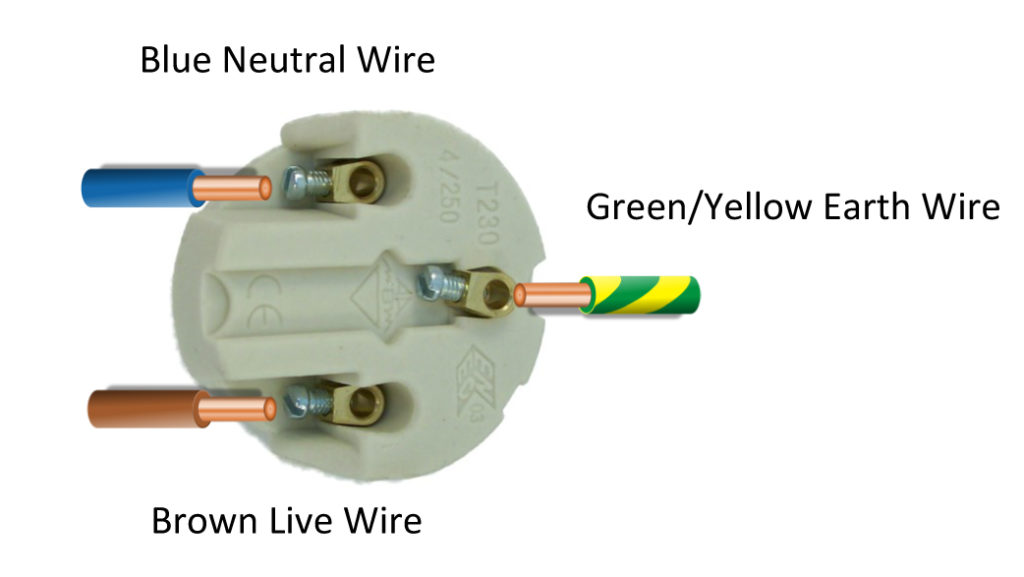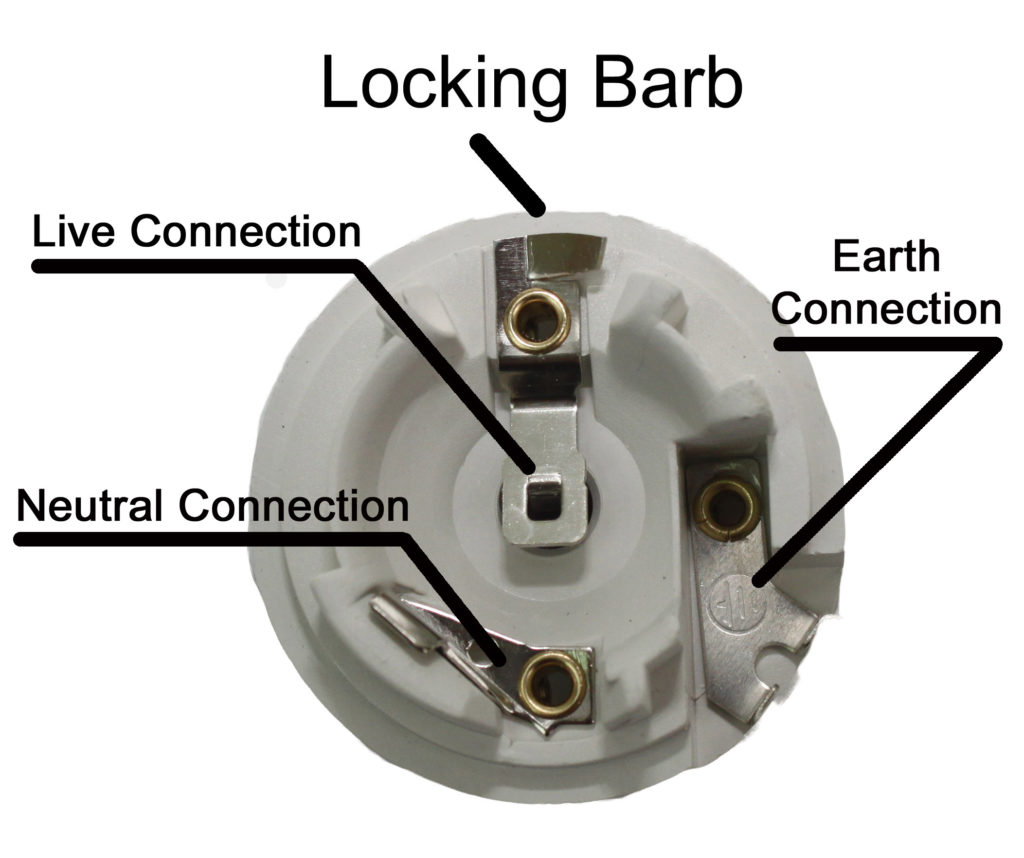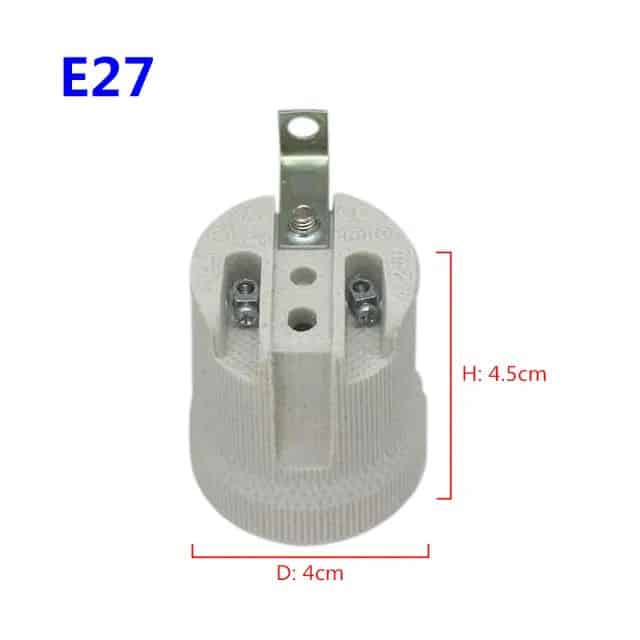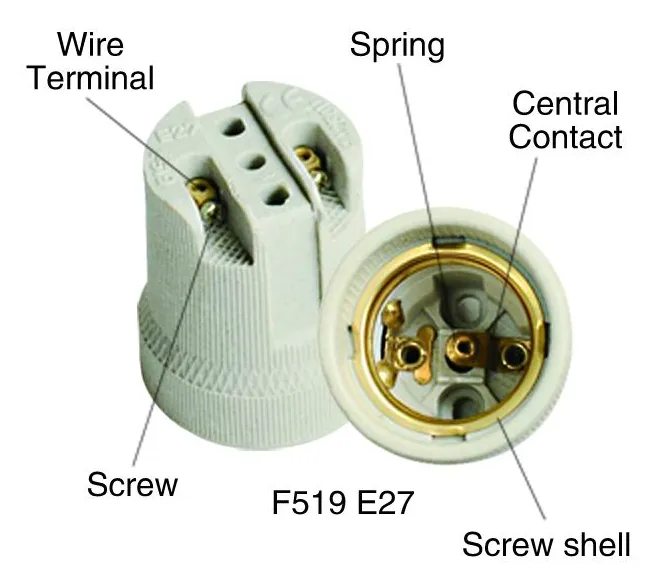Wiring an E27 lamp holder can be confusing and dangerous if you don’t know what you’re doing. Follow these steps to make sure you install and operate your lamp holder safely.
To wire an E27 lamp holder, first, turn off the power. Connect the brown (live) wire to the live terminal and the blue (neutral) wire to the neutral terminal. Make sure you tighten them down.
Here’s how to wire an E27 lamp holder safely.

Preparing the Wires for Connection
The first step in wiring an E27 lamp socket is to properly prepare the wires. Begin by ensuring the power is completely turned off at the source. Strip the outer insulation of the electrical wires to expose the inner copper wires. The brown wire is the live wire, and the blue wire is the neutral wire. Make sure to strip about 10mm of insulation from each wire.
Correct preparation of the wires is crucial for ensuring a secure and safe connection. Loose or poorly prepared wires can lead to short circuits or fire hazards.
Identifying the Live and Neutral Terminals
E27 lamp sockets have two terminals: one for the live wire (brown) and one for the neutral wire (blue). The live terminal is typically marked with an “L” and the neutral terminal with an “N.” It is essential to connect the correct wire to its corresponding terminal. Incorrect wiring can lead to electrical faults or damage to the lamp.
Ensure that the screws securing the wires to the terminals are fastened well, but not overly tight, to avoid damaging the wire strands.
Securing the Wires in the Terminal
Once the wires have been prepared, insert the stripped ends into the correct terminals on the E27 lamp holder. The brown live wire should go into the terminal marked “L,” and the blue neutral wire into the terminal marked “N.” Use a small screwdriver to securely fasten the retaining screws over the wire ends.
Check to make sure no copper strands are left exposed, as this could cause an electrical short or a risk of electric shock.

Adding an Earth Wire (If Necessary)
If your lamp holder requires an earth wire (green/yellow), connect it to the grounding terminal. In some cases, plastic lamp holders may not require grounding, but for metal lamp holders, grounding is essential for safety.
Grounding helps protect users from electrical shocks, especially in case of a wiring fault, making it an important step for metal lamp holders.
Testing for Secure Connections
After connecting the wires, it’s important to test whether the connections are secure. Gently pull on each wire to ensure they are firmly in place. Loose wires can cause intermittent connections, which might lead to flickering lights or, worse, electrical hazards.
Once you are sure the connections are secure, reassemble the lamp holder by carefully pushing the parts back together and screwing the cover back onto the lamp holder.
What to Do If You Wired the Lamp Holder Incorrectly
If you accidentally wire the lamp holder incorrectly, such as reversing the live and neutral wires, it can cause the lamp to malfunction or lead to safety issues. In such cases, immediately turn off the power, disconnect the wires, and rewire them correctly.
Always test the lamp after installation to ensure it is functioning properly. If the lamp doesn’t light up, double-check your connections to make sure they’re correct.

Removing Wires from an E27 Lamp Holder
If you need to remove or replace the wires, start by switching off the power. Unscrew the terminals and gently pull the wires out. Be careful not to damage the copper wire ends in the process, as they may need to be reused.
Take note of the wiring setup before removal to ensure you follow the same safe procedure when rewiring.
Differences Between E26 and E27 Lamp Holders
Although E26 and E27 lamp holders are similar, with only a 1mm difference in the screw diameter, E26 light holders are used primarily in the USA with a voltage rating of 110-120V, while E27 holders are used in Europe and other countries with a voltage of 220-240V.
Despite their similarities, always ensure the correct holder and bulb combination for your region to avoid electrical issues.
Using Adapters for Different Bulb Types
In situations where the bulb does not match the lamp holder, adapters can be used to bridge the gap. For example, an E26 bulb can be used in an E27 lamp holder with the help of an adapter, provided the voltage is compatible.
Using the correct lamp adapter is critical to ensuring the bulb operates safely and correctly.

Final Safety Checks
Before using the lamp holder, perform a final safety check. Double-check all wire connections, ensure the lamp holder is securely assembled, and that no wires are exposed. Turn on the power and test the light to ensure it works without flickering or issues.
If the light works smoothly, your installation is complete, and the E27 lamp holder is ready for use.
Final Words:
Wiring an E27 lamp holder is a job where you need to pay close attention to detail and follow safety standards.













